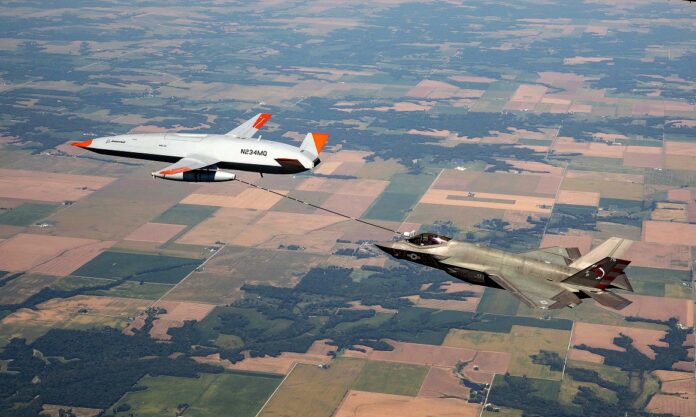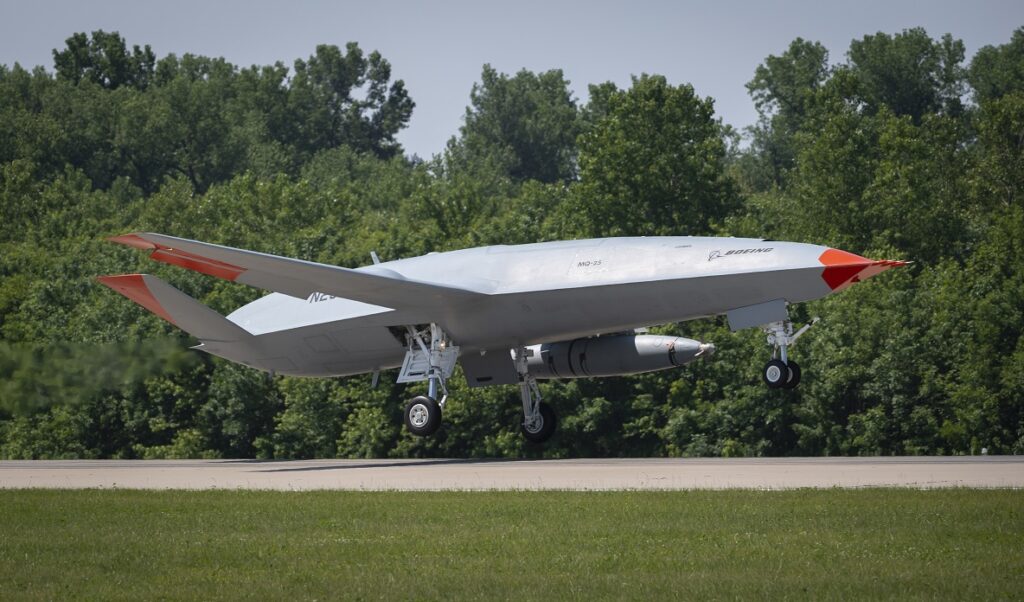
The US Navy’s Unmanned Carrier Aviation (PMA-268) program successfully completed the first aerial refuelling of an F-35C Lightning II aircraft by the Boeing-owned MQ-25 test asset T1, as part of the Navy’s larger initiative to field unmanned systems that transform and enhance the fleet’s capability, capacity, and lethality.
This was the T1 test aircraft’s third refuelling flight. During the three-hour flight, a Navy F-35C pilot assigned to Air Test Wing and Evaluation Squadron Two Three (VX-23) approached T1, conducted formation evaluations, wake surveys, drogue tracking, and plugged with the MQ-25 test asset at 225 knots calibrated airspeed (KCAS) and 10,000 feet altitude. An air vehicle operator then initiated the fuel transfer from T1’s aerial refuelling store to the F-35C from the ground control station.
Once operational, the MQ-25 will refuel any carrier-based aircraft equipped with a receiver. Each distinct aircraft platform will experience a unique aerodynamic interaction with the MQ-25. Conducting refuelling test missions with a variety of aircraft enables the program to analyze data and determine if any guidance or control adjustments are necessary.
Earlier this summer, the program completed unmanned refuelling missions with a F/A-18 Super Hornet and E-2D Advanced Hawkeye. Each aircraft platform is aerodynamically unique so how they respond in the wake of a tanker is different. Flying different aircraft behind the MQ-25 lets us assess how they will interact, Reed said.

Following this flight, T1 will enter into a modification period to integrate the deck handling system in preparation for a shipboard demonstration this winter. To date, T1 has conducted 36 flights, providing the program with valuable information on aerodynamics, propulsion, guidance and control in advance of the MQ-25 engineering and manufacturing development aircraft deliveries.
The MQ-25 will be the first operational carrier-based unmanned aircraft and will provide critical aerial refuelling and intelligence, surveillance and reconnaissance capabilities to support the Air Wing of the Future – a mix of fourth and fifth-generation aircraft, manned and unmanned platforms, and netted sensors and weapons.
Along with organic tanking, the MQ-25 will pave the way for manned and unmanned teaming (MUM-T) of carrier-based aircraft that will extend the strike range and enhance manoeuvrability. As unmanned tanking capacity increases, the manned tanker requirement decreases, promoting additional service life and capacity available for manned strike-fighter missions.
Check out Naval Library App to find out the specifications of the MQ-25 Stingray.




